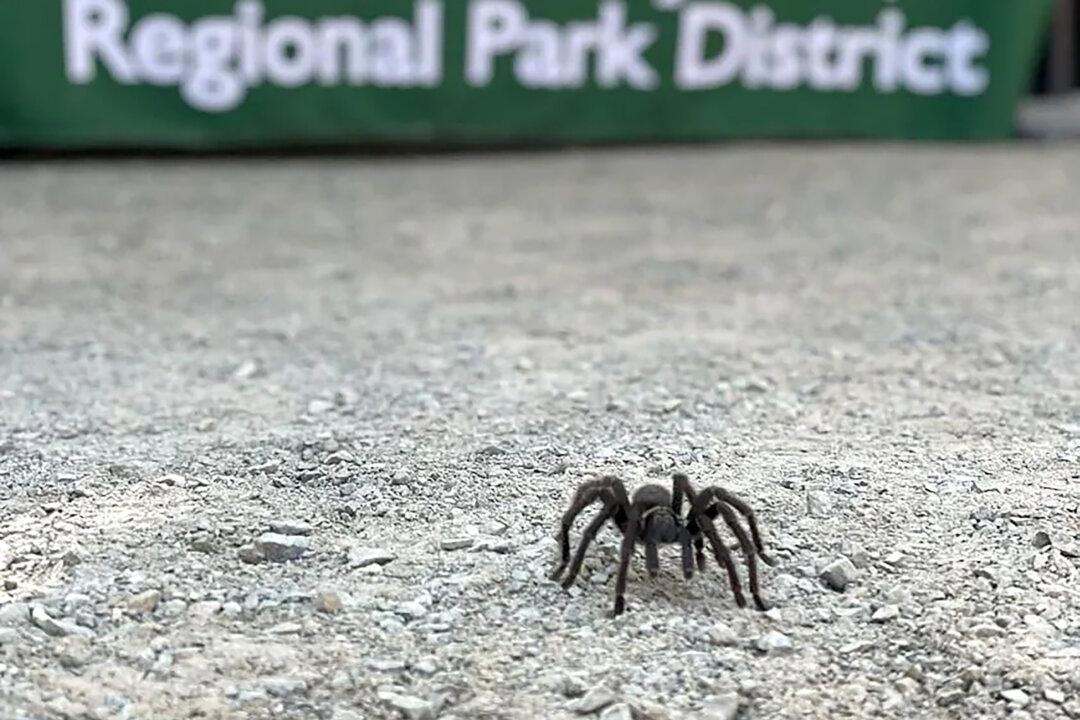The tarantulas of the San Francisco Bay Area are one of its lesser known residents. These giant spiders prefer to roam the hills and are seldom seen except in late summer and early fall.
Katie Garchar, a naturalist from the East Bay Regional Park District, told The Epoch Times in an email, “Mid-August to late October is tarantula mating season.”



